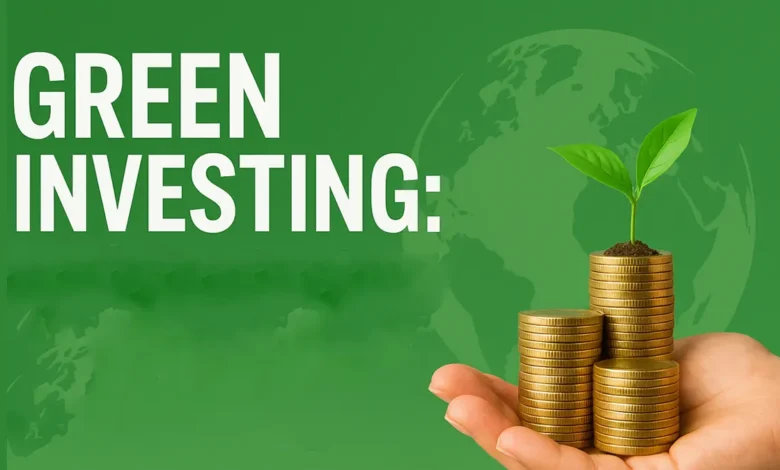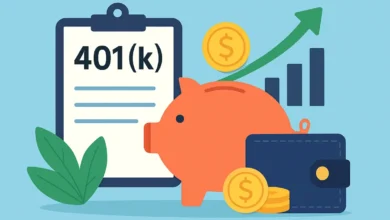Green Investing: Making Money While Saving the Planet

Table of Contents
Green investing is an investment strategy that supports companies and projects that prioritize sustainability. It’s also known as ESG (environmental, social, and governance) investing.
Investors can support the development of waste-to-energy technologies, pollution control systems, and other innovations that promote sustainable practices. Diversifying green investments across different sectors, regions, and asset classes helps spread risks and enhance potential returns.
What is Green Investing?
Green investing is a way for savers to use their money to support environmentally friendly business practices and conservation of natural resources. This investment approach also offers the potential for financial growth. However, like any other investment, the success of green investments can depend on market conditions.
The simplest way for investors to get involved is by buying stocks of companies with environmental commitments. For example, renewable energy companies develop alternative energies and materials that replace fossil fuels. Green transportation companies make electric vehicles and other green methods of transporting people and goods. Other green industries include pollution control, water management, and waste reduction. Investors can also buy bonds issued by companies that practice sustainable agriculture and follow specific forestry standards to promote biodiversity and avoid deforestation.
It is possible to diversify your portfolio with green mutual funds and exchange-traded funds (ETFs). However, it is important to be aware of the risks involved in green investing. Investing in a fund simply because it is labeled green does not guarantee that the company adheres to desired environmental standards, and greenwashing is a common tactic used by some companies.
While the benefits of green investing are clear, it is important to note that financial returns are not the only motivation for many investors. Many choose to diversify their portfolios with green investments because they want their savings to reflect their values and social convictions.
How Does Green Investing Support Sustainability?
Investing with an environmental focus is more than just a way to make money; it’s also a chance to support sustainable practices. This is why green investing has become a growing trend, with individuals seeking to align their financial goals with their environmental values.
One of the most common ways to invest in green investments is by buying shares of companies that promote positive environmental values and participate in green industries. Alternatively, you can purchase ESG-focused funds or invest in green bonds, which are fixed-income securities that help banks and companies finance projects with a focus on sustainability.
Green investing offers several financial advantages, including the potential for stable returns. In fact, investors have reported that their green investment portfolios generate profits comparable to traditional investments. In addition, the reinvestment of returns from green investments supports compound interest, which is an effective tool for increasing investment wealth over time.
Despite its many benefits, sustainable investing is not without risks. One challenge is that there’s often a lack of information about green investments, making it difficult to assess their performance and risk tolerance. Additionally, it’s important to diversify green investment portfolios across sectors, regions, and asset classes to minimize risk and enhance potential returns. Furthermore, it’s essential to regularly review and adjust green investments to align with investor goals, market developments, and industry changes.
How Can Green Investing Earn Profits?
Green investing focuses on business practices that promote the conservation of natural resources and environmental consciousness. It also supports companies that provide products or services related to renewable energy, pollution reduction, water management, and sustainable agriculture. Investors can choose from a variety of options that fit under the umbrella term “green,” including mutual funds, exchange-traded funds (ETFs), green bond funds, and stocks. Some investors may be interested in pursuing pure play green investments, which derive their profits entirely from environmentally friendly activities and innovation. While profit is not the only motive, there are indications that green investing can rival returns on more traditional assets.
When it comes to selecting green investment vehicles, investors should analyze each to determine if their philosophies match those of the fund or company. They should also consider their risk tolerance. Concentrating too much in one market sector can increase volatility, so a well-diversified portfolio is important. It is also essential to check for greenwashing, which refers to marketing strategies that use environmentalism as a sales tool without any real ecological impact.
Another interesting green investment vehicle is the carbon market, where you can buy allowances from companies and seize them when they exceed their emissions limit, putting pressure on the emitters. It is a very innovative way to change the climate and support eco-friendly businesses.
Simple Tips for Beginners
Green investing is a great way to align your financial goals with your values. Whether you’re concerned about climate change, promoting gender equality, or advocating ethical governance, there are green investment opportunities that reflect your beliefs and support sustainable growth. As with any investing strategy, it’s important to carefully research companies and funds before committing your money. You may also wish to work with a financial advisor for bespoke professional advice, especially if you’re new to the field of green investing.
Some investors focus their investments on specific environmental issues, like renewable energy or clean transportation. Other investors opt for a broader approach, like investing in companies with environmentally friendly business practices or investing in waste reduction projects. Regardless of the sector you choose, it’s important to be aware of potential “greenwashing,” where companies falsely claim to be green in order to attract eco-conscious investors. You’ll want to perform your own due diligence by thoroughly reading company prospectuses and other related documents.
Many traditional investment firms offer ETFs and mutual funds that focus on companies with sustainable practices. These are a good place to start if you’re a beginner and need an easy way to invest in the green space. You can also consider purchasing green bonds, which are issued to fund environmentally friendly projects. This is another great way to get involved in green investing, and you can work with experienced sustainability investment firms that are familiar with quantifying company impact for accurate estimations.



